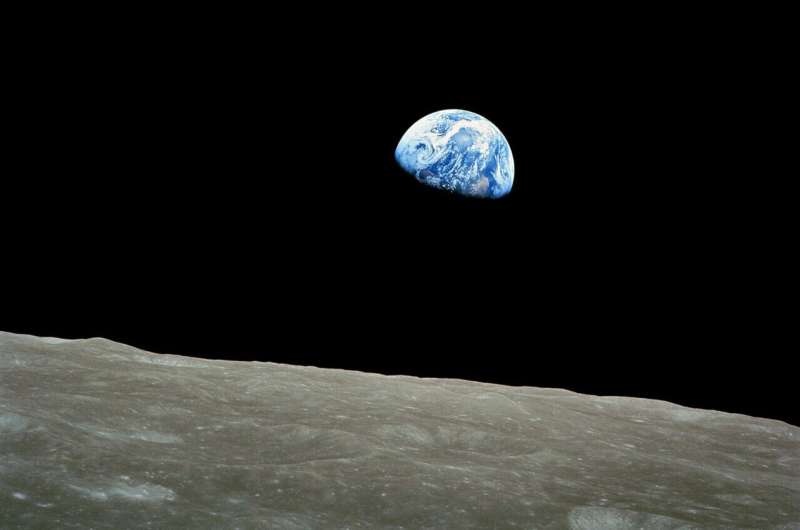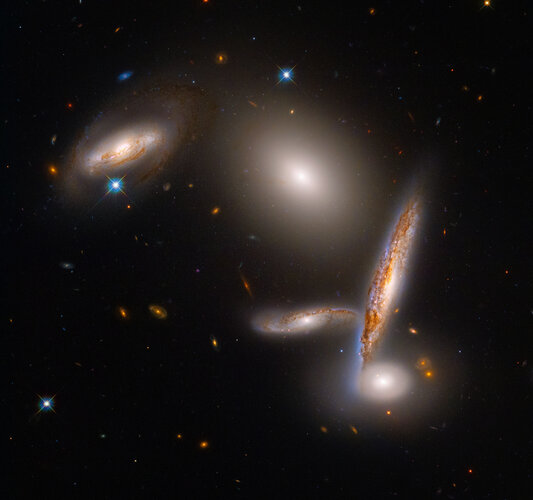
Copernical Team
Small spacecraft electric propulsion opens new deep space opportunities
 The path to the Moon, Mars, and beyond will require a fleet of spacecraft in many different shapes and sizes, including everything from massive rockets that produce millions of pounds of thrust to pioneering small electric propulsion thrusters that fit in the palm of your hand.
For decades, innovators at NASA's Glenn Research Center have been developing large, high-power electric propulsio
The path to the Moon, Mars, and beyond will require a fleet of spacecraft in many different shapes and sizes, including everything from massive rockets that produce millions of pounds of thrust to pioneering small electric propulsion thrusters that fit in the palm of your hand.
For decades, innovators at NASA's Glenn Research Center have been developing large, high-power electric propulsio Report identifies priority planetary science mission and planetary defense efforts as strategic investments
 A new decadal survey from the National Academies of Sciences, Engineering, and Medicine identifies scientific priorities and opportunities and makes funding recommendations to maximize the advancement of planetary science, astrobiology, and planetary defense in the next 10 years.
The recommendations by the steering committee for the decadal survey draw on input from the scientific communit
A new decadal survey from the National Academies of Sciences, Engineering, and Medicine identifies scientific priorities and opportunities and makes funding recommendations to maximize the advancement of planetary science, astrobiology, and planetary defense in the next 10 years.
The recommendations by the steering committee for the decadal survey draw on input from the scientific communit NASA builds welding test article for SLS Exploration Upper Stage
 NASA completed manufacturing of a hydrogen tank barrel that will be tested as a weld confidence article for the Space Launch System (SLS) rocket's Exploration Upper Stage (EUS). Weld confidence articles help establish welding procedures and interfaces between the tooling and hardware and ensure the structural integrity of the welds. Starting with the Artemis IV mission, the EUS will provide the
NASA completed manufacturing of a hydrogen tank barrel that will be tested as a weld confidence article for the Space Launch System (SLS) rocket's Exploration Upper Stage (EUS). Weld confidence articles help establish welding procedures and interfaces between the tooling and hardware and ensure the structural integrity of the welds. Starting with the Artemis IV mission, the EUS will provide the Rocket Lab secures multi-launch contract with HawkEye 360
 Rocket Lab (Nasdaq: RKLB) has been selected by Virginia-based HawkEye 360 to launch three Electron missions for the radio frequency geospatial analytics provider. The first of the three missions is scheduled to be Rocket Lab's inaugural Electron mission from Launch Complex 2 on Wallops Island, Virginia, ushering in an era of Rocket Lab launches from U.S. soil from no earlier than December 2022.
Rocket Lab (Nasdaq: RKLB) has been selected by Virginia-based HawkEye 360 to launch three Electron missions for the radio frequency geospatial analytics provider. The first of the three missions is scheduled to be Rocket Lab's inaugural Electron mission from Launch Complex 2 on Wallops Island, Virginia, ushering in an era of Rocket Lab launches from U.S. soil from no earlier than December 2022. Axiom-1 return to Earth delayed due to weather
 The Axiom-1 private astronauts aboard the International Space Station will stay in space a little longer because of poor weather in the area of the Atlantic Ocean where their capsule is to splash down.
Weather officials, together with Axiom, NASA and SpaceX, are working to determine when they can safely bring the crew home. The crew has already spent 12 days in space.
Once a new
The Axiom-1 private astronauts aboard the International Space Station will stay in space a little longer because of poor weather in the area of the Atlantic Ocean where their capsule is to splash down.
Weather officials, together with Axiom, NASA and SpaceX, are working to determine when they can safely bring the crew home. The crew has already spent 12 days in space.
Once a new Can LISA see the gravity waves 10 picoseconds after the Big Bang
 The early universe may chirp about unknown physics. A University of Helsinki research team has demonstrated how an early universe phase transition will lead to gravitational wave signals potentially visible in the upcoming satellite missions. The research results were recently published in the prestigious journal Physical Review Letters.
Phase transitions, such as the boiling of water or t
The early universe may chirp about unknown physics. A University of Helsinki research team has demonstrated how an early universe phase transition will lead to gravitational wave signals potentially visible in the upcoming satellite missions. The research results were recently published in the prestigious journal Physical Review Letters.
Phase transitions, such as the boiling of water or t US pledges to end anti-satellite missile tests

The United States announced a commitment to stop testing anti-satellite missiles that generate dangerous debris in space, a measure described Tuesday as "an important step" by the head of NASA.
The United States, the first country to make such a pledge, has encouraged other nations to follow its lead, with the goal of establishing "a new international norm for responsible behavior in space," the White House said in a statement.
"This is especially important as there is an ever-increasing number of states and non-governmental entities that rely on space services and space assets which are vulnerable to debris," it added.
The announcement comes five months after Russia destroyed one of its own satellites in a missile test that created a cloud of debris and forced the seven crew on the International Space Station to temporarily take shelter in their return ships.
Washington denounced the strike as "dangerous and irresponsible."
Russia and the United States are among the small handful of nations that possess the high-tech anti-satellite weapons known as ASATs. The missiles have also been used by China and India.
Celebrating Hubble’s 32nd birthday with a galaxy grouping
 Image:
Celebrating Hubble’s 32nd birthday with a galaxy grouping
Image:
Celebrating Hubble’s 32nd birthday with a galaxy grouping Navy conducts historic test of new laser weapon system
 The ground-based laser system homed in on the red drone flying by, shooting a high-energy beam invisible to the naked eye. Suddenly, a fiery orange glow flared on the drone, smoke poured from its engine and a parachute opened as the craft tumbled downward, disabled by the laser beam.
The February demonstration marked the first time the U.S. Navy used an all-electric, high-energy laser weap
The ground-based laser system homed in on the red drone flying by, shooting a high-energy beam invisible to the naked eye. Suddenly, a fiery orange glow flared on the drone, smoke poured from its engine and a parachute opened as the craft tumbled downward, disabled by the laser beam.
The February demonstration marked the first time the U.S. Navy used an all-electric, high-energy laser weap Perseverance at the Delta
 Last week's blog talked about the rapid traverse of Perseverance to the Delta. This weeks blog entry will talk about the Delta itself, and why it is something worth rapidly traversing towards!
The prospect of the delta for me is that every day will be full of excitement and could bring anything. Let me explain that a bit further. On a space mission like M2020 you get used an exciting timel
Last week's blog talked about the rapid traverse of Perseverance to the Delta. This weeks blog entry will talk about the Delta itself, and why it is something worth rapidly traversing towards!
The prospect of the delta for me is that every day will be full of excitement and could bring anything. Let me explain that a bit further. On a space mission like M2020 you get used an exciting timel 
